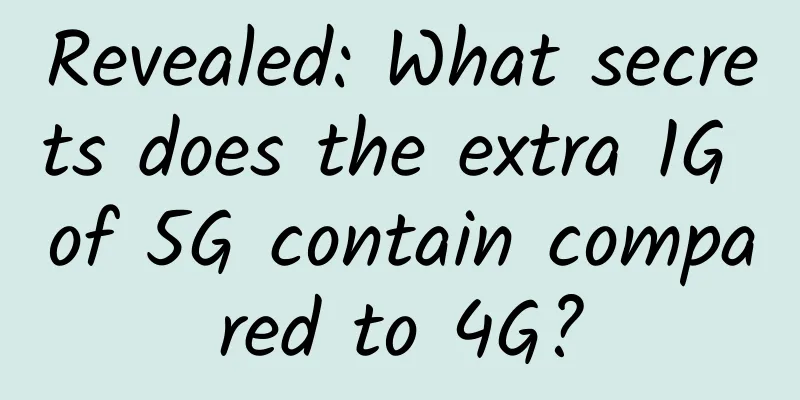Counterpoint data shows the future of 5G in 2020

|
2019 is a crucial year for the mobile phone industry. After the overheating of smartphones, the global market growth has experienced several years of stagnation, and the market as a whole needs positive stimulation. The news of 5G commercial use is exactly the stimulation the mobile phone market needs. In addition to 5G, mobile phone manufacturers have also accelerated the pace of technological updates in AI, photography and other aspects. Therefore, in the trends of the mobile phone market this year, we can see the users’ reactions to the technology updates, and thus better infer the development trends of 5G mobile phones in the future. Recently, the authoritative market research organization Counterpoint Market Monitor released the China Smartphone Market Report for the second half of 2019 and the share of China’s online mobile phone market in the third quarter. It showed a lot of data worth pondering. Countdown to recovery: Mobile phone manufacturers that focus on the online market CP data shows that China's smartphone market fell 5% year-on-year in the third quarter, but increased 3% month-on-month, and the year-on-year decline was milder than in the first two quarters. CP pointed out that the recovery of China's smartphone market is more obvious online. Data shows that the proportion of online sales in China's overall smartphone market has increased from 24% in the first quarter of 2019 to about 27% in the third quarter. In fact, the online market has always been a stronghold for mobile phone manufacturers, but the difference is that a few years ago, there was a so-called "Internet mobile phone", and the industry differentiated mobile phone brands by sales channels. In fact, this year, the logic of channel differentiation has changed. The original Internet mobile phones began to focus on the layout of offline scenarios, and "traditional" mobile phone brands also focused on the creation of online channels. The most typical case is Huawei. Honor, which was originally defined as an "Internet phone", completed its transformation into an omni-channel mobile phone brand this year, and Huawei also strengthened its focus on online sales. The result is obvious. Among the top 6 brands in China's online mobile phone market, Huawei's online share accounted for 46%, taking the first and second place, exceeding the combined market share of Apple, Xiaomi, and OV. In addition to Huawei, Xiaomi, which ranks third, and Vivo, which ranks fourth, are also intriguing. The OV series has always been known for its deep presence in the offline market, and its offline channel development model has repeatedly become the object of study for other mobile phone manufacturers. But this year, OV has also begun to increase its development of the online market. For example, Vivo launched an online sub-brand IQOO. Compared with Q1 2019, its online share has also increased accordingly, from 7% to 10%. However, Xiaomi, which has always been famous for its online market, only had an online market share of 14% in Q3, even if the Redmi brand, which was independent this year, is taken into account, which is a serious decline compared to its share of more than 20% at the beginning of the year. The different performances of these brands make people realize that the growth of the online market cannot be achieved solely through marketing or channel construction. Technical shock: How did the ranking differences of the TOP 6 come about? Looking at the development of Chinese smartphones in recent years, we can see that under fierce competition, market share continues to concentrate on the above six brands. In this process, brands such as LeTV, Hammer and even Gionee have failed one by one. And what drives this competition is the shock from technology. The pressure of the red ocean competition on manufacturers is the same, but the difference is that brands such as LeTV and Hammer choose to resist the pressure with low-price subsidies and false marketing hype, while the TOP 6 brands continue to innovate in underlying chips, appearance technology, mobile AI, and imaging capabilities. Today, the "aftershocks" of technological shocks are still there. Huawei, which topped the list, and Honor, which occupies 20% of the market share, the reason why Huawei can occupy half of this list is obviously due to the two brands' emphasis on technology investment, whether it is the Kirin series chips, or the Ark compiler and a series of Turbo technologies that optimize the Android experience from the software level, the technology dividend is directly reflected in the performance. In particular, through software-level optimization, mobile phone manufacturers can create a better user experience without increasing hardware costs, achieving a win-win situation between mobile phone manufacturers and consumers, and thus allowing Huawei to frequently produce popular models. Take Honor 9X for example, this popular mobile phone, which became one of the top 10 best-selling models in the online market and the overall Chinese market in the third quarter, attracts users by carrying the Kirin 810 chip and applying GPU Turbo3.0 technology and other hard-core performance. The same is true for Vivo. Previously, due to its focus on offline channel models, OV products were once criticized for "high prices and low technology content." But in the past two years, OV has been more active in terms of the accumulation of patents and the speed of 5G follow-up. It is also because of the increased technology investment in its sub-brand IQOO that Vivo has made progress in the ranking of the second echelon. On the contrary, Xiaomi and Apple are the two brands whose market share declined due to the aftershocks. Apple's online market share in the third quarter was 9%, which was basically the same as the first quarter. But for a new phone season, this performance is still poor. Xiaomi, which originally had a deep accumulation in the online market, saw its market share drop by 6% from the beginning of the year to Q3, which makes it hard to believe that this was the performance of an early Internet mobile phone brand. Although they have different positioning, Xiaomi and Apple are both facing similar criticisms. For example, Xiaomi has been repeatedly criticized for insufficient R&D investment and lack of core technology since last year; Apple proposed "Innovation" at its press conference in September this year, emphasizing its emphasis on innovation. In general, being able to become one of the top 6 brands and to concentrate 84% of the Chinese online mobile phone market means that they have made sufficient achievements in technological innovation. However, the competition between brands still reflects differences. For example, Honor and Xiaomi, both of which are not "Internet brands" originally originated online, have opened up a gap in market performance due to their different investments in innovation. Welcome to 2020: The Unfair 5G Adventure After witnessing the technological shocks in the mobile phone market in Q3 2019, our real goal is to make a preliminary judgment on the market development in 2020 based on the market performance in the second half of this year. With the advent of 5G commercial use, 2020 (including Q4 of this year) will be a period for mobile phone manufacturers to focus on technology updates. Judging from the different performances of the top 6 mobile phone manufacturers in Q3, mobile phone manufacturers that are more aggressive in technological innovation are obviously more popular with consumers. This also means that consumers are highly sensitive to the technological innovation of mobile phone manufacturers, so we can have more expectations for 2020. If consumers' considerations on mobile phone technology innovation were relatively scattered in 2019, with improvements in chip performance, imaging, AI, and battery life all attracting their attention, then in 2020, when 5G is the main theme, consumers' considerations on mobile phones will be relatively concentrated, which can basically be summarized into two questions: "Can 5G be used?" and "How to use 5G?" Faced with these problems, the first test is the mobile phone manufacturers' own layout of communication performance. At present, my country's policy of insisting on implementing SA networking 5G networks has become quite clear, which has also made dual-network 5G mobile phones mainstream. Since Q4, Huawei has begun to lay out its layout with its relative familiarity with the communications industry. It has not only released the dual-network Huawei Mate 30 5G series, Honor V30 Pro 5G series and Huawei Nova 6 5G series, but also applied the 5G baseband chip Balong 5000 to the above products, trying to make further progress in network experience. Of course, other manufacturers that rely on Qualcomm are also making intensive layouts. I believe that when Qualcomm updates the 5G baseband in 2020, Chinese mobile phone manufacturers will definitely compete for the first launch rights. Next comes the test of ecological layout. The excitement that 5G brings to the market is that this technology can not only be applied to mobile phones, but also greatly change the IoT experience. Chinese component manufacturers, mobile phone manufacturers, operators and channel dealers have introduced development strategies such as "5G+IoT" and "5G+AI" in an attempt to lay out the IoT ecosystem in advance. Huawei's "1+8+N" strategy ("1" mobile phone + "8" large smart hardware + "N" pan-intelligent terminals) and Honor's IoT ecosystem released in 2018 will become important cards in the 5G era. In addition to Huawei's first-mover advantage in 5G technology, smart terminals, 5G networks, and IoT ecosystems can be better combined to play a role in driving each other, which will not only improve the user experience in the 5G era, but also give mobile phone manufacturers such as Honor more flexibility for future development, and no longer rely solely on the mobile phone itself as a pillar. There are also manufacturers like Xiaomi, which have temporarily slowed down their progress in 5G but have made many layouts in the IoT field. They may have the opportunity to fight a 5G turnaround from an ecological perspective. Of course, there is also the final test of channel inertia. Consumer behavior is inertial. In 2020, 5G will refresh mobile phone products, but it will not necessarily reshuffle the purchasing channels and the market share of mobile phone manufacturers. It is highly likely that online channels and the top six manufacturers will still maintain a certain advantage in 2020. As for how long their advantages can be maintained, it depends on the efforts of mobile phone manufacturers themselves. Considering the current situation, it is easy to find that the "5G adventure" in 2020 is not a "fair competition" for mobile phone manufacturers to redraw the starting line. The accumulation of 5G communication technology, the layout of the IoT ecosystem, and even the existing market segmentation have formed the foundation for development. For example, a brand like Honor, which has a large number of young users as a "voting warehouse" in terms of market share and shares technological achievements with Huawei, actually has a certain degree of first-mover advantage. But for the mobile phone industry, 2020 is still an adventurous year full of unknowns and opportunities. 5G may bring a new application ecosystem, and incubate new hardware such as smart headphones, VR glasses and IoT. All these opportunities are waiting for mobile phone manufacturers to implement. In the cold winter of December, China's mobile phone industry has entered the awakening of hibernation. The rise of the consumer market and the commercialization of 5G are just the beginning of spring thunder. People who are dormant and weaving the future will eventually wait for the warm spring light. |
<<: Huawei Cloud's Zheng Yelai: Diversified computing power drives application innovation
>>: In the 5G era, how are operators doing in the government and enterprise market?
Recommend
More than just 1G more than 4G, what are the obstacles for 5G commercial use?
Although there is still a long way to go before 5...
Work together to build a secure network and digital ecosystem
Today, digital transformation led by emerging tec...
What is coming will come. Taiwan may shut down 3G this year.
According to Taiwanese media reports, Chunghwa Te...
Pre-terminated trunk copper cable and method of using the same
High-density cabling products and standard modula...
CloudCone Black Friday promotion, KVM annual payment starts from $14.2, supports Alipay, Los Angeles data center
CloudCone has once again released this year's...
Effective Ways to Protect SIP Connections
Session Initiation Protocol (SIP) is the underlyi...
Cisco releases AI Readiness Index: What is the current status of AI readiness among Chinese companies?
In 2023 , AIGC has created a huge wave in the fie...
How small businesses will benefit from 5G
Before enough new devices enter the mainstream ma...
SpartanHost: 1TB large hard disk VPS starts at $6/month, 10Gbps large bandwidth high-security VPS starts at 20% off $4/month
SpartanHost, also known as Sparta, is a foreign h...
[Black Friday] HostDare: $9.89/year-768MB/15G NVMe/1TB/Los Angeles Data Center
HostDare also released a Black Friday promotion p...
8 essential skills for network engineers in 2017
The current average job responsibilities of a net...
To accelerate 5G innovation and monetization, Ericsson and several operators jointly established a network API company
According to foreign media reports, communication...
PacificRack: $6.66/year KVM-512MB/15GB/1TB/Los Angeles
PacificRack's 2021 New Year flash sale has al...
50% of CIO panel members predict that 5G will drive the development of the Internet of Things
A panel of 12 technology experts (also known as t...
Wi-Fi 7 is here! Ruijie adheres to scenario-based innovation and steps up efforts in the new wireless network era
Wi-Fi is ubiquitous in today's world, and its...









